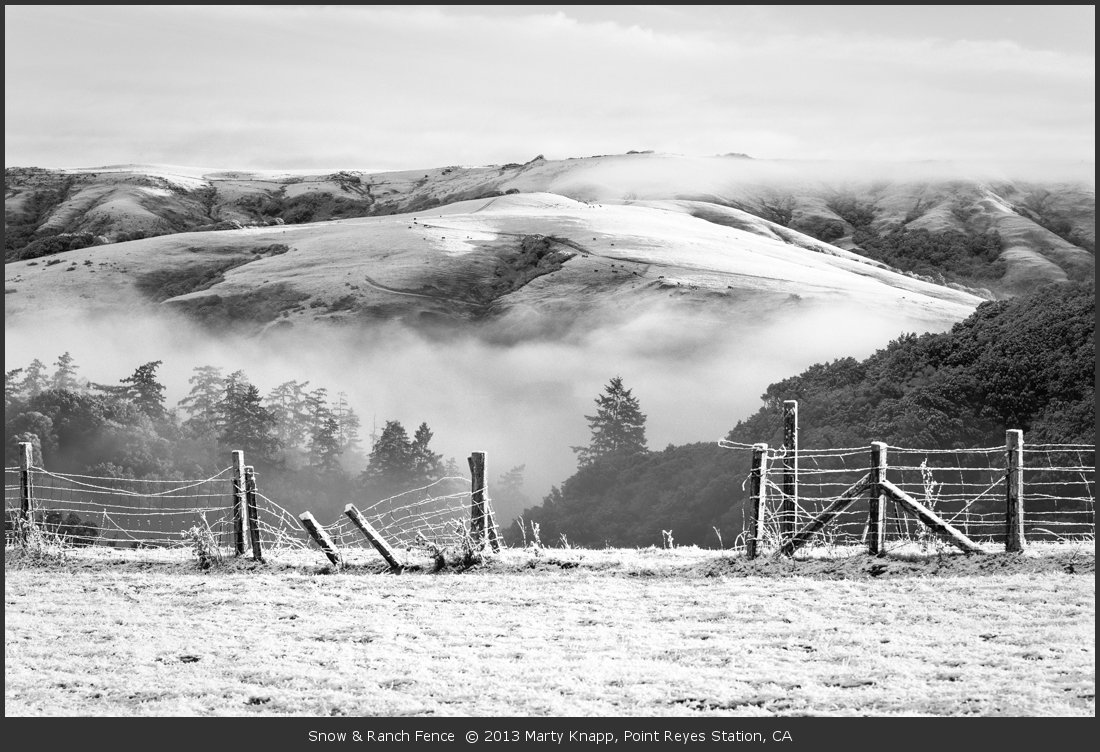MUSINGS ON THE CREATIVE PROCESS
Finding Your Photograph:
Going Deeper by Slowing Down
I believe that the creation of an expressive photograph is born from a dance between the rational and the intuitive. Each faculty is fundamental to and inseparable from the creative effort. Both the heart and the mind must participate if the photograph is to have enduring value… to express something deeper than the mere surface of things.
I know from first-hand experience that making an expressive photograph through sheer will-power alone is not easy. I’ve learned that my ability to discover and express what I see and feel works best when I let go of my willfulness and preconceived ideas. I set aside a specific time for creative connections to occur. I try to slow down to connect more deeply with what I see. It may be difficult to let go during this time, but I know that if I do, the creative rewards can be richly fulfilling.
To create, I need time to wander, with no pressing family or work obligations. I’ll set off slowly, exploring my back yard, or perhaps I’ll walk around the neighborhood, or amble around at a nearby natural location. This is not a time for multi-tasking, so I don’t try to do any cardio-vascular working out at this time! I empty my mind, forgetting any ideas of what I might or should photograph. Sometimes I’ll leave my camera behind, and “photograph” with my eyes, making a mental note to return with camera if something beckons. This working without my camera can open up new ideas. I see things I never noticed when I had my camera glued to my forehead. When I do carry my camera, I keep it tucked away in the bag, and resist making any photographs, unless something calls out — strongly. When that happens it’s a little like falling in love… creative juices begin to flow. My response comes more from my heart than my brain.
Everything slows down. I approach the object of my interest with care and respect. I become fascinated, drawn. I become involved, sensing that my participation is being requested. I offer my undivided attention. I approach slowly, moving up for a closer look. Still no camera, I simply use my eyes, moving my body into various positions checking the changing shapes, perspectives and relationships of things to each other as I move side to side, close and away. It is during this time that I will decide whether I will make a photograph.
I rarely make a photograph based on the very first way I see something. There’s something about spending the time, delighting in seeing the various aspects, a prelude to deciding on a composition. This is where I really get to see! Something of me, my connection to this scene, has a chance to arise as I explore in this way. And this is where art has a chance to occur– A collaboration of the scene and my reaction to it that I hope will become embedded and expressed in my photograph. When the process works, these feelings and thoughts will also come across to the viewer of the image.
Now it’s time to take out the camera

This is what separates photography from snap-shooting. Wonderful post, Marty. Thank you.
Love the Marin County Snow scene! I agree about looking before shooting, the same is true for looking at works in a museum.
Fabulous. Thank you so much. Barbara Dwyer